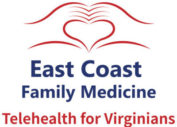Navigating healthcare can be a daunting task, especially when faced with complex medical and insurance terms. Patients often encounter unfamiliar words and phrases that can impact their understanding of coverage, medical procedures, and costs. A lack of clarity in these terms can lead to confusion, miscommunication, and even financial strain.
Why Medical and Insurance Terminology is Difficult
Medical and insurance jargon is often highly specialized, making it challenging for the average person to comprehend. Here are a few reasons why these terms can be difficult to understand:
- Complexity and Specificity: Many medical and insurance terms are highly technical and require specialized knowledge to interpret correctly.
- Use of Acronyms and Abbreviations: Terms such as “EOB” (Explanation of Benefits) and “HMO” (Health Maintenance Organization) can be confusing without proper context.
- Legal and Financial Implications: Insurance policies contain legal language that outlines coverage details, exclusions, and payment responsibilities, which can be difficult to decipher.
- Inconsistent Definitions: Some terms may have different meanings depending on the insurance provider or healthcare facility, leading to further confusion.

Key Medical and Insurance Terms Explained
To help patients navigate the complexities of healthcare, here are some commonly misunderstood terms with simple explanations:
- Deductible: The amount a patient must pay out-of-pocket before insurance starts covering costs.
- Co-payment (Co-pay): A fixed amount a patient pays for a covered healthcare service, typically at the time of the visit.
- Coinsurance: The percentage of costs a patient must pay after meeting their deductible.
- Out-of-pocket Maximum: The maximum amount a patient will pay in a year before insurance covers 100% of costs.
- Preauthorization: Approval from an insurance company before receiving certain medical services to ensure coverage.
- Formulary: A list of prescription drugs covered by an insurance plan.
How to Overcome Understanding Barriers
To make informed healthcare decisions, patients should take proactive steps to understand medical and insurance terminology. Here are a few strategies:
- Use Glossaries and Online Resources: The National Association of Insurance Commissioners (NAIC) provides a comprehensive glossary of health insurance terms (link).
- Ask Questions: Patients should not hesitate to ask their healthcare provider or insurance representative to clarify confusing terms.
- Review Policy Documents Carefully: Understanding one’s insurance coverage can prevent unexpected costs and coverage denials.
- Utilize Patient Advocacy Services: Many organizations provide assistance to help individuals navigate healthcare terms and policies.

Conclusion
Understanding medical and insurance terms is crucial for making informed healthcare decisions. By utilizing reliable resources, asking questions, and reviewing documents thoroughly, patients can better navigate the complexities of the healthcare system.
For more information, visit the NAIC Health Reform Glossary or consult with your healthcare provider. Taking the time to understand these terms can save you money, reduce stress, and empower you to take charge of your healthcare journey.
Need help decoding medical and insurance terms? East Coast Family Medicine offers expert guidance and tools to simplify healthcare terminology. Start understanding your coverage today—contact us now!

